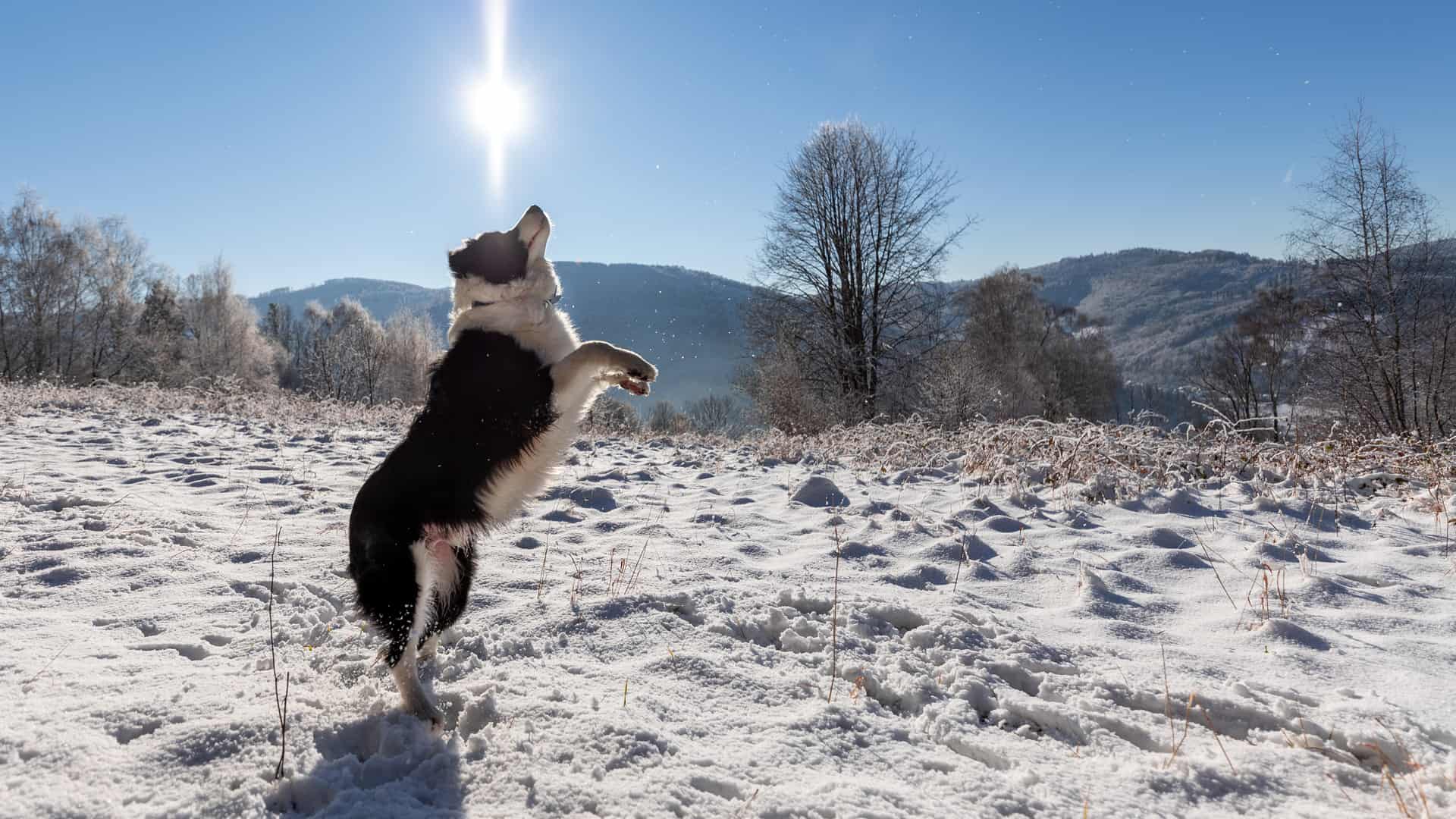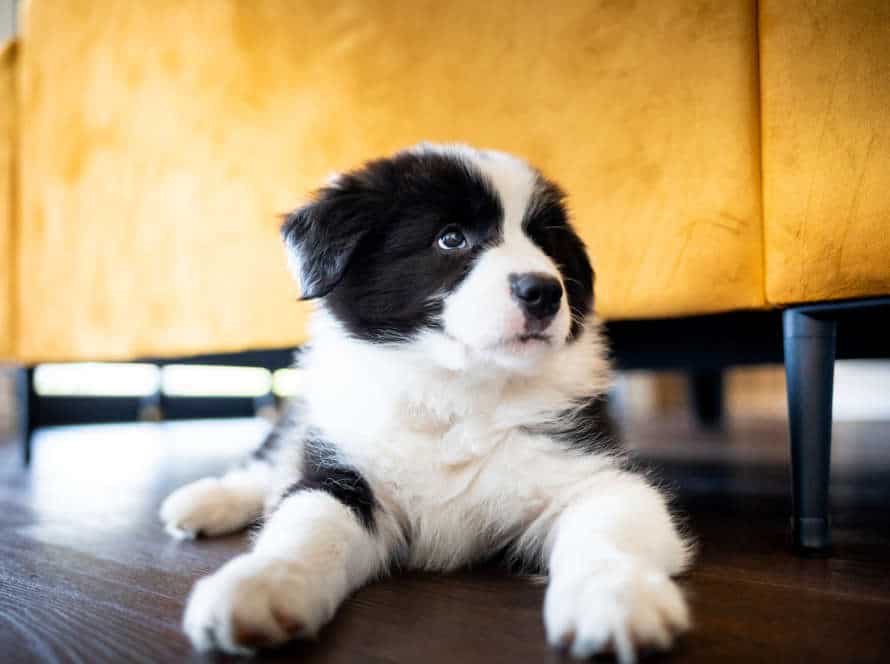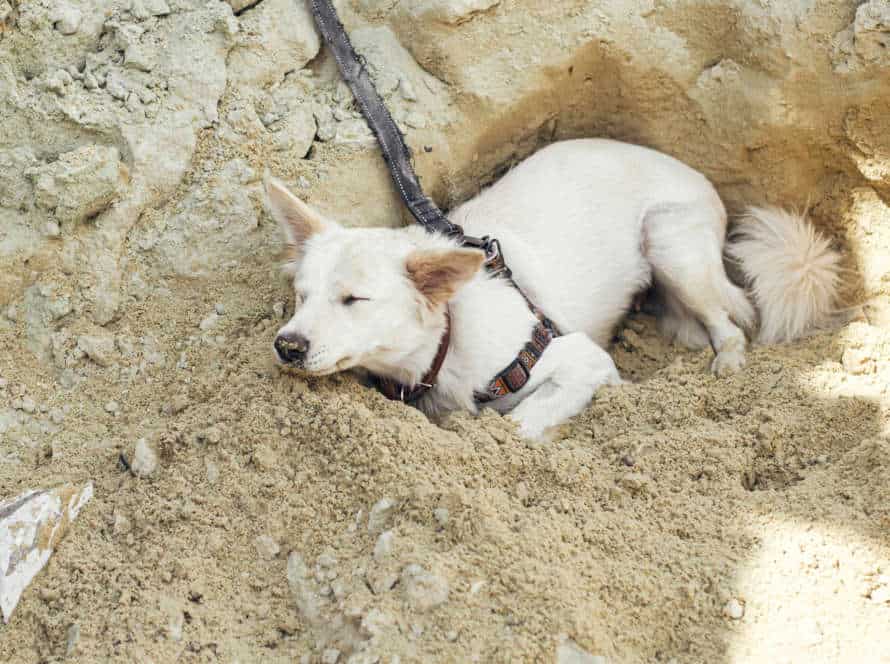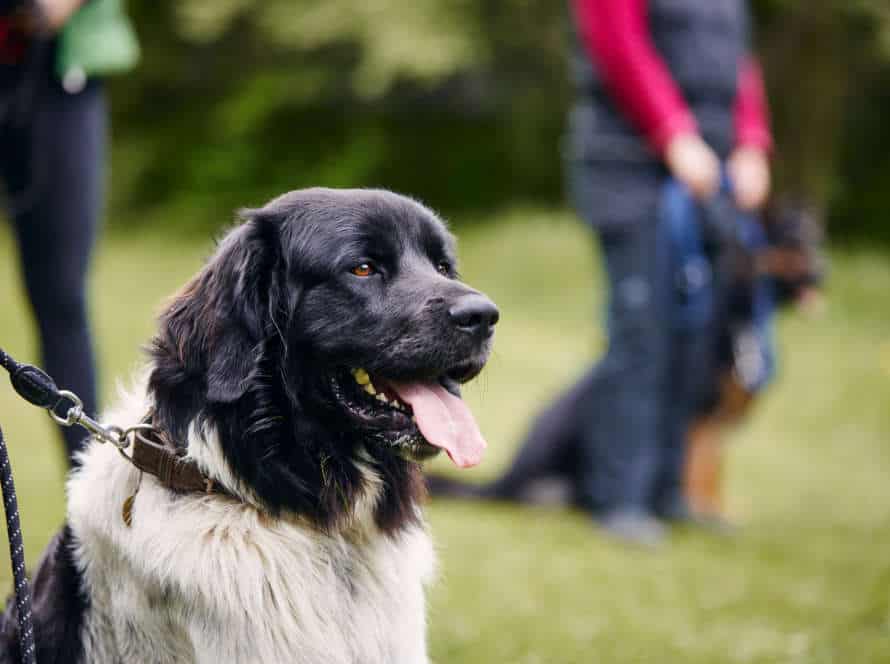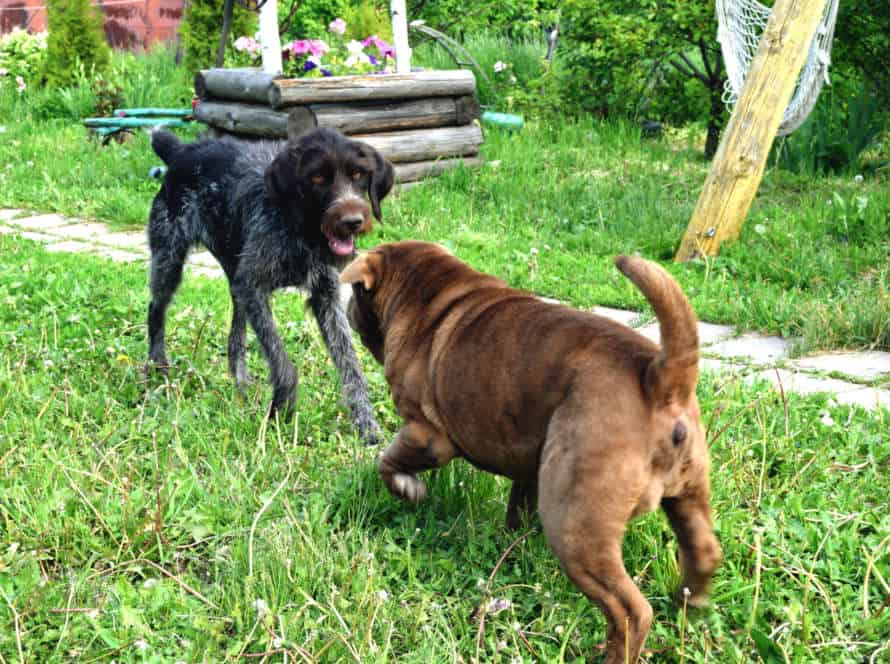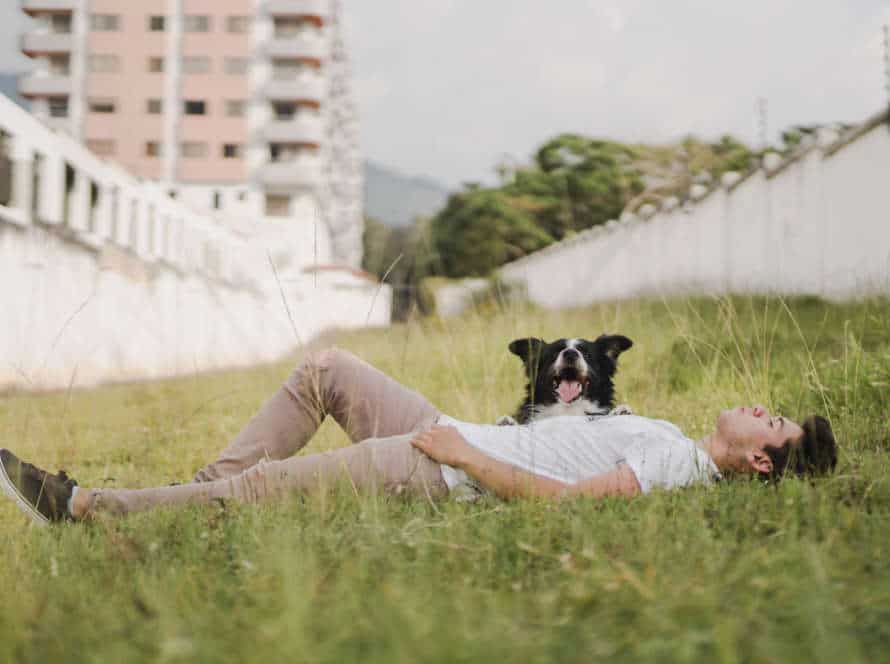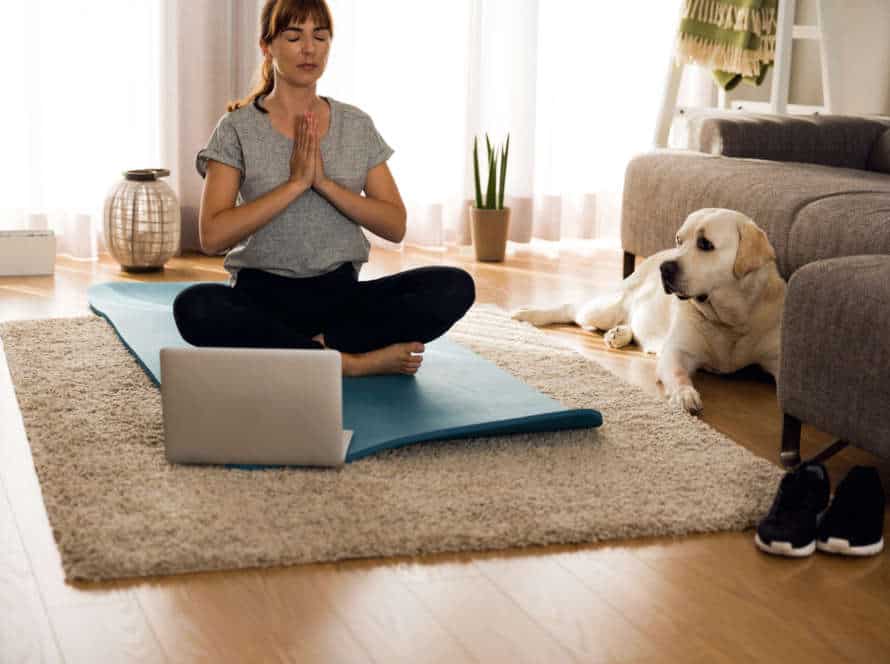Training Your Dog to Greet Guests Politely
Train your pup to welcome visitors courteously by teaching them to regulate their doings and obey certain instructions during social meetings. Here are some tips to aid you:
- Instruct your dog basic orders such as ‘sit‘, ‘stay‘ and ‘come‘.
- Utilize positive reinforcement methods like treats and compliments to recompense correct conduct.
- Exercise socialization drills with your canine in assorted conditions and with different people.
- Establish limits for your dog by using verbal and visible signals to signify the appropriate behavior.
- Be persistent and tolerant in your training attempts.
- Dodge punishing your dog for bad behavior as it can create fearfulness and hostility.
By following these suggestions, you can teach your dog to greet guests politely and avert any inappropriate behavior during social meetings.
Understanding Your Dog’s Greeting Behavior
To teach your dog how to greet guests politely, it’s important to understand their greeting behaviour. This can be anything from jumping, barking, nipping, or being shy – and depends on how they were socialised as a pup.
Grasping this concept is the first step. With the right foundation and understanding, you’ll help your pup be the perfect guest!
The Importance of Socialization
Socialization is important for a pup’s growth– it shapes how they meet people and interact with humans. Socializing a dog involves exposing them to different settings, people, and other dogs- helping them build social skills, reduce fear, and improve behavior. A dog that is socialized properly is more confident, friendly, and chill when greeting strangers, and it is easier to teach them to be polite.
To train your pup to greet visitors with politeness, reinforce positive behaviors, like keeping eye contact and sitting still. Give your pup positive rewards for good behavior and use words or objects to distract them from negative behavior. Over time, your dog will learn that good habits result in rewards, and this will improve their greeting manners and help them socially interact with others.
Pro tip: Keep calm and be positive when dealing with your dog- this will help them stay calm too!
Different Types of Dog Greetings
It is important to know the various types of dog greetings, to teach your pup to welcome visitors politely and to modify their behavior.
These are the kinds of dog greetings:
- The Jumping Greeting: Dogs show enthusiasm and love by jumping. But it may become risky. You can train your canine to stay put and greet people in a calm manner.
- The Nose-to-Sniff Greeting: Dogs sniff to gain knowledge about the new person. It is perfectly fine, but some pups might become obsessed with it. You can teach your dog to sniff for a short time and break the sniffing addiction.
- The Body Contact Greeting: Dogs express friendliness and fondness by pushing against the person’s legs. It won’t be a problem unless the dog is too big or too strong. You can instruct your pooch to lean politely and stay still.
- The No Greeting: Dogs may also be uninterested or display avoidance behavior. It is not aggressive conduct, and it is best to respect the dog’s limits. You can educate your pup to feel more relaxed by introducing them to other canines and people.
Why Training is Important
Training is key for comprehending your pup’s welcome habits and instructing them to greet visitors politely. Dogs are social animals and greeting their owners and other individuals is a piece of their regular behavior. But, jumping, barking, and mouthing can be dangerous and disagreeable for visitors.
Why is training significant?
- It helps build a better bond between you and your dog.
- It encourages good behavior and stops bad behavior.
- It enhances communication between you and your pup.
- It helps your dog understand their boundaries and act consequently.
Training your dog to politely greet guests involves different techniques, such as teaching them to sit and stay when someone shows up, utilizing positive reinforcement, and giving them socialization chances.
Teaching Your Dog the “Sit-Stay” Greeting
You can have your pup greeting guests with good manners in a jiffy! Teach them the “sit-stay” greeting. It’s simple and easy to remember. Just need some patience and practice. Ensure your pup is always making a good impression with visitors. And you’re all set!
How to Teach Your Dog to Sit-Stay
Teaching your pooch to “Sit-Stay” is a must for training and welcoming visitors politely. Here’s what you should do:
- Begin by calmly telling your dog to sit.
- Once your pup has sat, use your hand or a treat to keep them in position while taking a step back.
- Utter the command, “Stay” while holding your hand up like a stop signal. If the pup moves, firmly say “No” and bring them back to the starting position.
- Step back towards your pup, facing them and give a treat or praise.
- Keep repeating these steps with gradual increases in the distance, time duration and distractions.
To make sure your pup won’t jump on people when they get too excited, they should learn the “sit-stay” command. Doing this will make them sit instead of jumping up.
Pro Tip: Keep your training sessions short and reward your pup with praise or a treat for motivation.
Adding Distractions and Reinforcing Good Behavior
Dogs need activities and rewards to learn “sit-stay” and guest manners. Here’s how:
- Use treats and positive reinforcement during training.
- Give verbal commands like “stay” and “come”.
- Gradually add distractions, like new sounds and people.
- Reward your dog with treats or compliments when they do good.
- Repeat daily and gradually increase training time.
- All family and guests should use same commands and rewards.
Pro tip: Keep training sessions short, max 10-15 minutes. And do it when your dog is most awake and aware.
Practice Makes Perfect
Training your pup to greet guests with politeness requires time and patience. Practicing is key! Teaching them the “sit-stay” greeting is a must. Here’s how:
- Begin by instructing your doggo to sit on command. Utilize treats to fortify this behavior.
- Once your pup has aced sitting, introduce the “stay” command. Start with short periods and eventually increase the length your pup should stay in place.
- After they ace sitting and staying, practice the behavior with someone your pup hasn’t met yet.
- Have your acquaintance approach your pooch slowly and calmly. If your pup stands or jumps, cut off the behavior and make them sit and stay again.
- Gradually expand the duration and distance of the greeting as your pup grows more comfortable with the behavior.
Remember, consistency and positive reinforcement are essential for training success. Practice in diverse settings and with new people to strengthen your pup’s skills.
Pro tip: Before beginning the “sit-stay” greeting training, make sure your pup is comfortable around people and is socialized.
Redirecting Your Dog’s Attention
Train your pup to welcome visitors courteously. It’s important for creating a secure, comfortable and fun atmosphere for all. Redirecting your dog’s attention is an excellent way to do this. Redirecting keeps them focused on the behaviors you want to see and away from the ones you don’t. Here we’ll give some tips and techniques on redirecting your dog’s attention to greet guests politely.
Using Positive Reinforcement to Encourage Good Behavior
Positive reinforcement is a great way to teach your pup good behavior, especially when it comes to being polite to visitors. Here’s how you can train them:
- First, teach your dog to sit when you ask them to. Give them treats and lots of praise.
- When someone arrives, ask them to sit and stay.
- Have your guest ignore the pup until they are calm and seated.
- Reward your pup with a treat once they are calm and let them greet your guest.
- If your pup gets too excited and starts jumping, tell your guest to turn away and ignore them until they calm down.
- Finally, remember to always praise and reward your pup when they show polite behavior while greeting guests.
Redirecting Your Dog’s Attention Away from Jumping
Redirecting your pup? Here’s the plan!
Command them: Teach your dog to ‘sit‘ or ‘lie down‘, and use these commands when they’re about to jump.
Reward good manners: Praise and treat when they greet people politely, no jumping!
Exercise: Make sure your dog is not overly excited by getting them out for a run first.
Be consistent: Train every day to reinforce good behavior.
Use toys: Give them a toy to play with instead of jumping.
So, to sum it up – redirecting attention away from jumping helps train your dog to be polite.
Catching and Correcting Bad Greeting Behavior
Dogs sometimes jump, bark, or lunge when greeting guests. This can be corrected by training. Here’s how:
- Teach your dog to sit. Praise them when they do it right.
- Introduce the “sit and stay” command. Back away from your dog while saying it.
- Practice the command when someone comes to the door. Use treats to reward good behavior.
- Gradually have people come inside.
- Do this regularly with different people. Reward good behavior.
With patience, you can catch and correct bad greeting behavior in your dog.
Common Mistakes to Avoid
Train your pup to greet visitors in a polite and composed manner- this is a fundamental lesson for all well-mannered pets. But, owners often tend to make mistakes while teaching this skill. Let’s explore the regular blunders and what to do instead.
Inconsistency in Training
One of the biggest no-nos when training your pup is inconsistency. Dogs pick up behaviour through repetition and staying consistent. Inconsistencies in training will confuse them.
Here’s how to avoid it:
- Don’t let your pup jump on visitors one day and scold them the next.
- Don’t vary your physical and verbal cues during training.
- Don’t ignore bad behaviour during training but then correct them in real life.
Consistency is key when training a dog. Make sure you have clear rules and boundaries and stay consistent in your actions and responses. Pro-tip: Positive reinforcement is an effective way to encourage good behaviour and consistency in your pup’s training.
Punishing Bad Behavior
Punishing bad behavior won’t teach your pup how to be polite to guests. Avoid these common mistakes:
- Yelling, hitting or restraining your dog – this will only make them scared.
- Excited tones and too much petting – this will just make their behavior worse.
- Inconsistency – different rules for different people will confuse your pup.
Use positive reinforcement, like treats and praise, to teach them the right way. Be consistent in your rules and eventually, no punishment will be needed.
Allowing Guests to Reinforce Bad Behavior
It’s important to avoid certain mistakes when training your dog for guests. These include allowing jumping, rough play, and excessive barking. To encourage polite behavior, here are tips to follow:
- Teach basic commands like ‘sit’ and ‘stay’.
- Use positive reinforcement.
- Practice with your pup.
- Keep them on a leash during initial meetings.
Consistent training, combined with positive reinforcement, are the keys to success. If needed, don’t hesitate to seek help from a professional dog trainer.
Tips for Maintaining Good Greeting Behavior
Train your pup to be on its best behavior when visitors come over. This will make sure your pup is well-liked and that your guests feel comfortable. Here’s how:
- Have good greeting behavior in place from the start.
- Make sure your pup is calm when meeting a guest.
- Reward it with treats and praise when it behaves.
Consistency and Practice
Consistency and practice are key when training your pup to welcome guests nicely. Here are some tips to help you keep good greeting behavior:
- Set limits: Explain what’s ok behavior for your dog when guests arrive. Train your dog to sit or stay before they meet anyone.
- Practice: Rehearse meeting scenarios with relatives and friends, with different people of all ages and sizes.
- Reward proper behavior: Appreciate and reward your dog when they act properly when meeting people, like sitting or staying before they say hi, not jumping or being relaxed and friendly.
- Be Patient: Training takes time and patience. Keep reinforcing good behavior and guide unwanted behavior.
Finally, your dog will learn and keep up good welcoming behavior, making them a great guest at any gathering.
Staying Positive and Patient
To train your pup to meet people politely, stay positive and patient. Here are tips:
- Begin with basic obedience training. Teach commands like “sit,” “stay,” and “come” to keep your dog in control when meeting new folks.
- Utilize positive reinforcement. Give treats, praise and affection for good behavior.
- Educate an alternate behavior. Show your pup how to greet guests politely, like a sit or handshake.
- Set realistic goals. Don’t expect fast results. Training takes time and patience.
- Remain calm and positive. Dogs can sense your emotions. Keep calm, and your pup will follow.
Pro tip: Keep reinforcing good behavior, even after your pup has perfected polite greeting.
Not Pushing Your Dog Beyond Their Limits
As a responsible pup parent, it’s vital to acknowledge and respect your dog’s capacities when teaching them to meet guests courteously. Here are some tips to help you sustain good greeting behaviour without overdoing it:
- Start small: Introduce your doggo to a few people at a time, in a tranquil and quiet atmosphere. This will aid your pup comprehend that meeting strangers is a pleasant experience.
- Be patient: Give your pooch time to adjust to unfamiliar visitors and let them come forward at their own pace. Don’t demand interaction if your pup appears hesitant or uneasy.
- Provide positive reinforcement: Reward your pup with treats, toys or love when they demonstrate good greeting behaviour, like sitting or staying tranquil when encountering unfamiliar people.
- Recognize your dog’s body language: Watch out for signs that your pup is becoming overwhelmed, such as panting, pacing, or turning away from the visitor. Redirect their focus with a toy or treat if this happens.
By following these steps, your doggo will understand to greet guests politely and joyfully without feeling overwhelmed or scared. Pro tip: Make the training enjoyable for your furry companion by including playtime and awarding them for good behaviour.
Frequently Asked Questions
Q: How do I train my dog to greet guests politely?
A: Start by teaching your dog basic obedience commands such as sit and stay, and then practice greeting exercises using positive reinforcement to reward good behavior. Consistency and patience are key to successful training.
Q: What should I do if my dog jumps on guests when they arrive?
A: If your dog jumps on guests, redirect their attention with a toy or treat, or have them practice a calm greeting behavior such as sitting. Be sure to also reinforce good behavior with positive reinforcement when they do greet guests politely.
Q: Can training my dog to greet guests politely also improve their behavior in other situations?
A: Yes, teaching your dog to greet guests politely can improve their overall behavior and responsiveness to commands. Consistent training can also strengthen the bond between you and your dog.
Q: How long does it take to train a dog to greet guests politely?
A: The amount of time it takes to train a dog to greet guests politely can vary depending on the dog and the amount of consistent training provided. It may take several weeks or even months of training to see significant improvement in your dog’s behavior.
Q: Can professional trainers help with training my dog to greet guests politely?
A: Yes, professional trainers can provide guidance and personalized training plans for training your dog to greet guests politely. They can also help address any underlying behavior issues that may be contributing to impolite greeting behavior.

